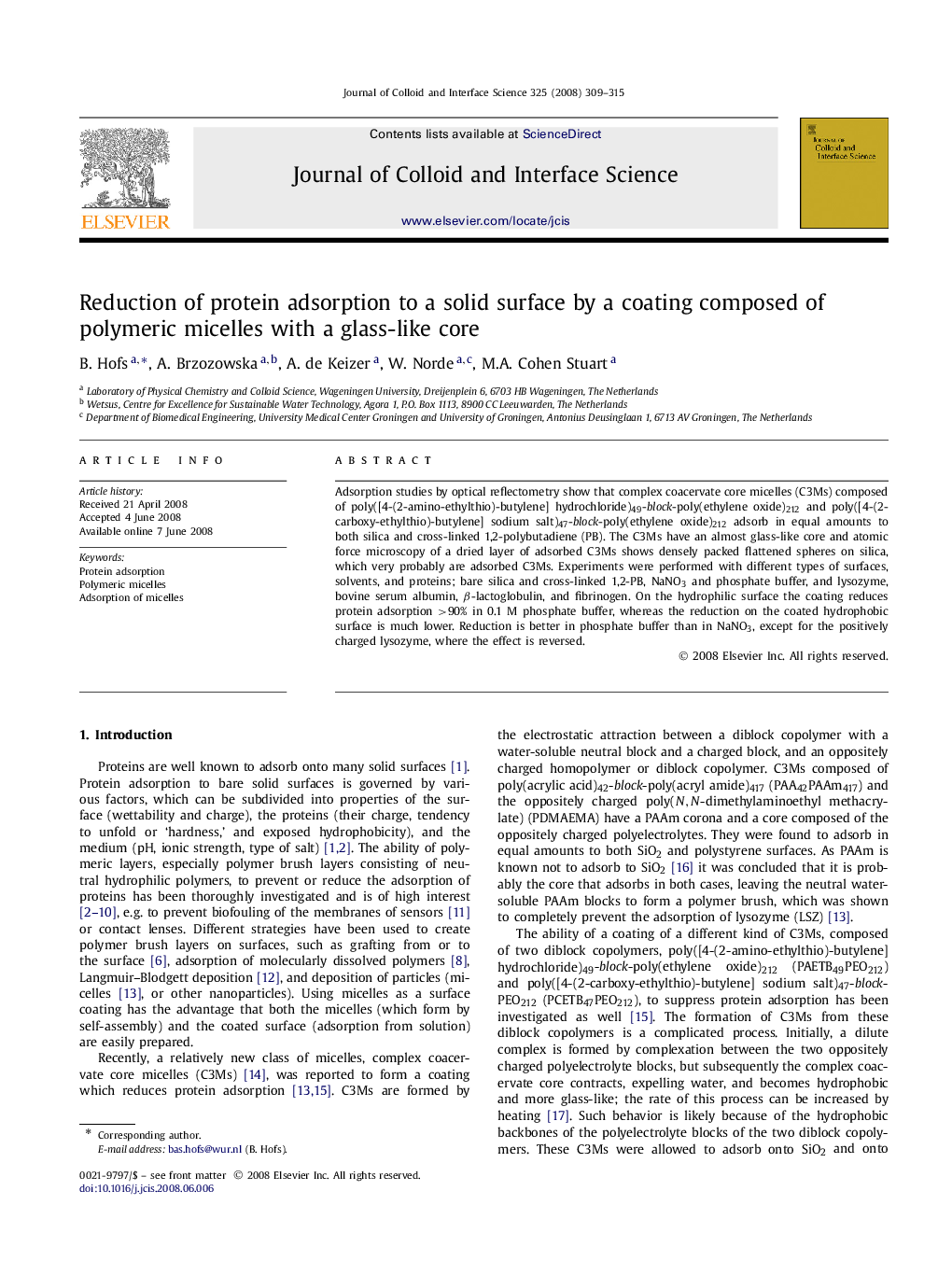| Article ID | Journal | Published Year | Pages | File Type |
|---|---|---|---|---|
| 611496 | Journal of Colloid and Interface Science | 2008 | 7 Pages |
Adsorption studies by optical reflectometry show that complex coacervate core micelles (C3Ms) composed of poly([4-(2-amino-ethylthio)-butylene] hydrochloride)49-block-poly(ethylene oxide)212 and poly([4-(2-carboxy-ethylthio)-butylene] sodium salt)47-block-poly(ethylene oxide)212 adsorb in equal amounts to both silica and cross-linked 1,2-polybutadiene (PB). The C3Ms have an almost glass-like core and atomic force microscopy of a dried layer of adsorbed C3Ms shows densely packed flattened spheres on silica, which very probably are adsorbed C3Ms. Experiments were performed with different types of surfaces, solvents, and proteins; bare silica and cross-linked 1,2-PB, NaNO3 and phosphate buffer, and lysozyme, bovine serum albumin, β-lactoglobulin, and fibrinogen. On the hydrophilic surface the coating reduces protein adsorption >90% in 0.1 M phosphate buffer, whereas the reduction on the coated hydrophobic surface is much lower. Reduction is better in phosphate buffer than in NaNO3, except for the positively charged lysozyme, where the effect is reversed.
Graphical abstractEffect of a coating of complex coacervate core micelles (C3Ms) on solid surfaces on protein (lysozyme, LSZ, beta-lactoglobulin, fibrinogen, and bovine serum albumin) adsorption in different media (NaNO3, phosphate buffer).Figure optionsDownload full-size imageDownload as PowerPoint slide
